Travel advice for Chile
From travel safety to visa requirements, discover the best tips for visiting Chile
Plan and book your private, tailor-made tour with vetted local experts
Chile’s unique geography, richly cultured cities (hello, Santiago!), rural villages, and opportunities to hike extraordinary landscapes make Chile a dream destination for adventure seekers, nature lovers, and culture enthusiasts alike. Given that range of possibilities, it can be pretty tricky to decide how to focus your vacation. So, here we present detail on how to plan your trip to Chile to make the process a little easier.
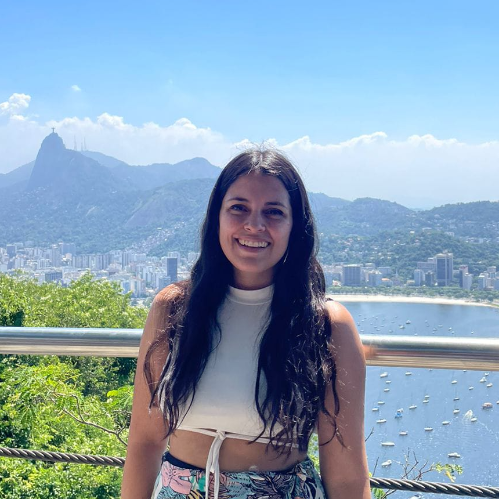
My name is Gabriela, and I grew up in the colorful landscapes of Salta, where my love for travel and culture first began. Guided by curiosity, I’ve explored remote nature, diverse traditions, and the stories that shape each place. The more I traveled, the more I appreciated the richness of Argentina and South America. Today, I use that passion to craft meaningful journeys that reveal the region’s true soul — its flavors, sounds, landscapes, and unforgettable human connections.

I was born in Buenos Aires and as a child I was fascinated with travel. As soon as I was old enough, I got jobs to help me explore the world, first on a cruise ship and then, after returning to Argentina to complete a degree in travel, with Latam and Emirates airlines, always chasing that wonderful feeling of discovering new places and their cultures. After over a decade of exploring the world, I returned to my home country, where my wanderlust was first ignited, to concentrate on my three great passions: theatre, food and South America, and dedicate more time with my husband and beautiful daughter Lucia.

I'm Ignacio, the owner of our local tour operator and proud Chilean.

I was born and raised in Paraguay, I came to Argentina to study and travel and fell in love with the country, which welcomed me with open arms and adopted me over twenty years ago. I first started working in the airline business and travelled throughout this amazing country getting to know each region, its charming and colourful people and its delicious and varied wines and cuisines, I am also fascinated by its folklore and traditional dances, dancing being my other great passion along with travel. In Buenos Aires, my now hometown, I am an established contemporary dancer and I have been fortunate enough to dance in many of its most important cultural centers including the Colon Opera House.
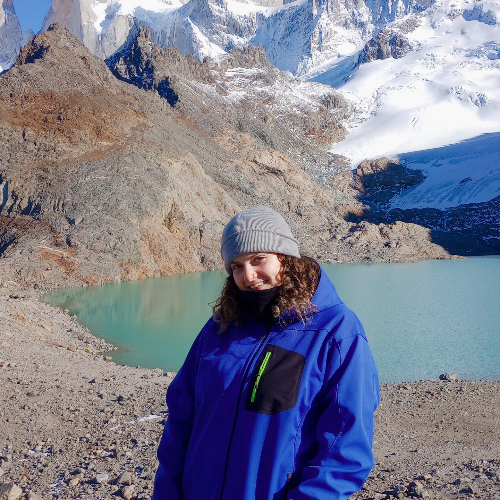
My first big trip across Argentina completely changed the way I saw my own country. I fell in love with its wild landscapes, deep-rooted culture, and the feeling of discovery around every corner. That journey lit a spark in me—and I knew I wanted to help others experience the same magic.
At 18, I decided to study Tourism and turn my passion into a lifelong adventure. From tracking pumas in Patagonia to kayaking hidden rivers and walking local trails, I’ve explored Argentina and Chile from top to tip—and I’m here to help you do the same.

I was born and bred in Buenos Aires and am now based out of Argentine Patagonia. Since I was a little girl, I have always enjoyed nature and the great outdoors. Growing up, I had the privilege to travel across Argentina and beyond into the rest of South America, discovering so many of the region's hidden treasures. In love with my country, (especially with Patagonia!) I decided to pursue a tourism degree to share my experiences. After more than eighteen years of helping people explore, I continue traveling, now with my own family, passing on my knowledge to my children; to see their faces light up with fascination and amazement with each new experience, is the best experience of all!
.jpeg)
My name is Isabella. I was born in Buenos Aires and raised in the mountains of Córdoba, where my passion for travel began. After studying Hospitality and Tourism and working in boutique and five-star hotels, I developed strong expertise in crafting personalised, memorable journeys. Having explored much of Latin America — from Argentina’s hidden gems to the diverse cultures and landscapes across the region — I love helping travellers discover authentic, meaningful experiences.

I am Camila Limardo. I was born and raised in Buenos Aires, Argentina. I got a degree in Tourism and Hospitality from the Argentine University of Enterprise. For three years, I've been working at a receptive agency that offers personalized trips throughout South America. I am passionate about traveling and discovering new cultures and destinations.
My favorite place in the world will always be Argentina.My favorite destination is El Calafate! I love it for its unique landscapes and incredible gastronomy. Walking on the glacier is a truly impressive experience, and the local cuisine, especially the Patagonian lamb, is absolutely delicious.
Over time, I've become an expert at designing personalized trips throughout Latin America.I am very excited to help you organize your dream trip and share all my recommendations!
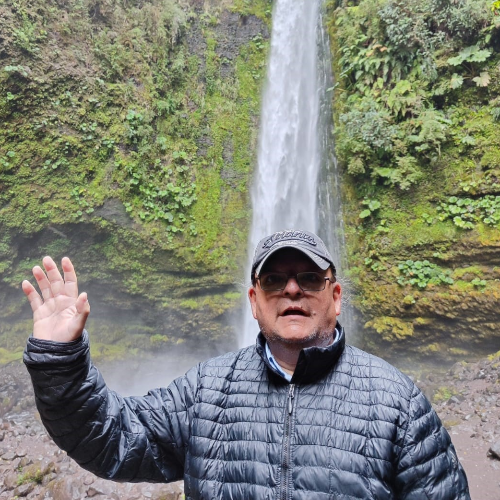
Hello, I’m Claudio. I have been working in tourism for over 30 years, specializing in designing and delivering unique experiences throughout Chile, always with a focus on quality, exclusivity, and privacy. I believe every journey should be unforgettable, which is why I offer both private and shared programs and tours, carefully crafted to suit every traveler. I already have programs ready and organized across the country, from wine routes in the Central Valley to adventures in Patagonia, Puerto Varas, Chiloé, and the mystical Easter Island, not to mention the breathtaking Atacama Desert. My commitment is to ensure that every traveler enjoys an authentic, personalized, and top-level experience. I look forward to welcoming you to Chile and giving you the very best in every experience.

My name is Camila, and as a tourism professional, I am dedicated to ensuring that our travelers have the best possible experience when traveling to Argentina. From the amazing city of Buenos Aires to the serene landscapes of Patagonia, I am committed to creating customized itineraries that perfectly suit each traveler interests and preferences. My industry experience and passion for travel allow me to offer advice and recommendations on the best places to stay, dine and explore. I do my best to create those travel memories that will stay in your life forever.
The best time to visit Chile depends on where you want to go, and what experiences are top of your travel wish-list. On that subject, read up on the best things to do in Chile so you can figure out your personal priorities.
For example, to enjoy Patagonia’s extraordinary hikes, you’ll want to visit during the summer months of December to February, when the weather is warmer and days are longer. This is also the best time to hit the best beaches in Chile.
Into skiing? Visit the Chilean Andes from June to August when there is snow.
Meanwhile, the Atacama Desert is a year-round vacation destination, though nights can be chilly in winter.
To avoid peak season crowds (and prices), visit Patagonia in the shoulder-season months of November or March.
Don’t mind layering up? Santiago and the wine valleys are wonderful in fall (March to May) — think richly-toned foliage when the grape harvest is in full swing.
Keen to cover a lot of ground? Contact our local Chile travel experts — they can curate your perfect Chile itinerary for any duration, and any Chilean destination.

Deciding when to visit is a key part of the how to plan a trip to Chile process © Shutterstock
While the answer to that question is entirely dependent on your wish-list and budget, on balance, we suggest looking to follow a 10 days in Chile itinerary.
In that timeframe, with planning and focus, you could cover a pretty big range of experiences, perhaps focussing on Santiago, Valparaíso and the wine valleys as one option, or the Atacama Desert, or Torres del Paine.
Alternatively, you could devote most of this vacation to Easter Island, which requires additional flights, so a minimum stay of three days is recommended.
If you can, try to work to a 14 days in Chile itinerary, which will enable you to see more regions. For example, you could combine Santiago, Atacama and Patagonia. Or how about covering Santiago, Valparaíso, Easter Island and the wine country.
If you’re into active adventure and nature, consider devoting your trip to the best hikes in Chile, or exploring Chile’s best national parks.
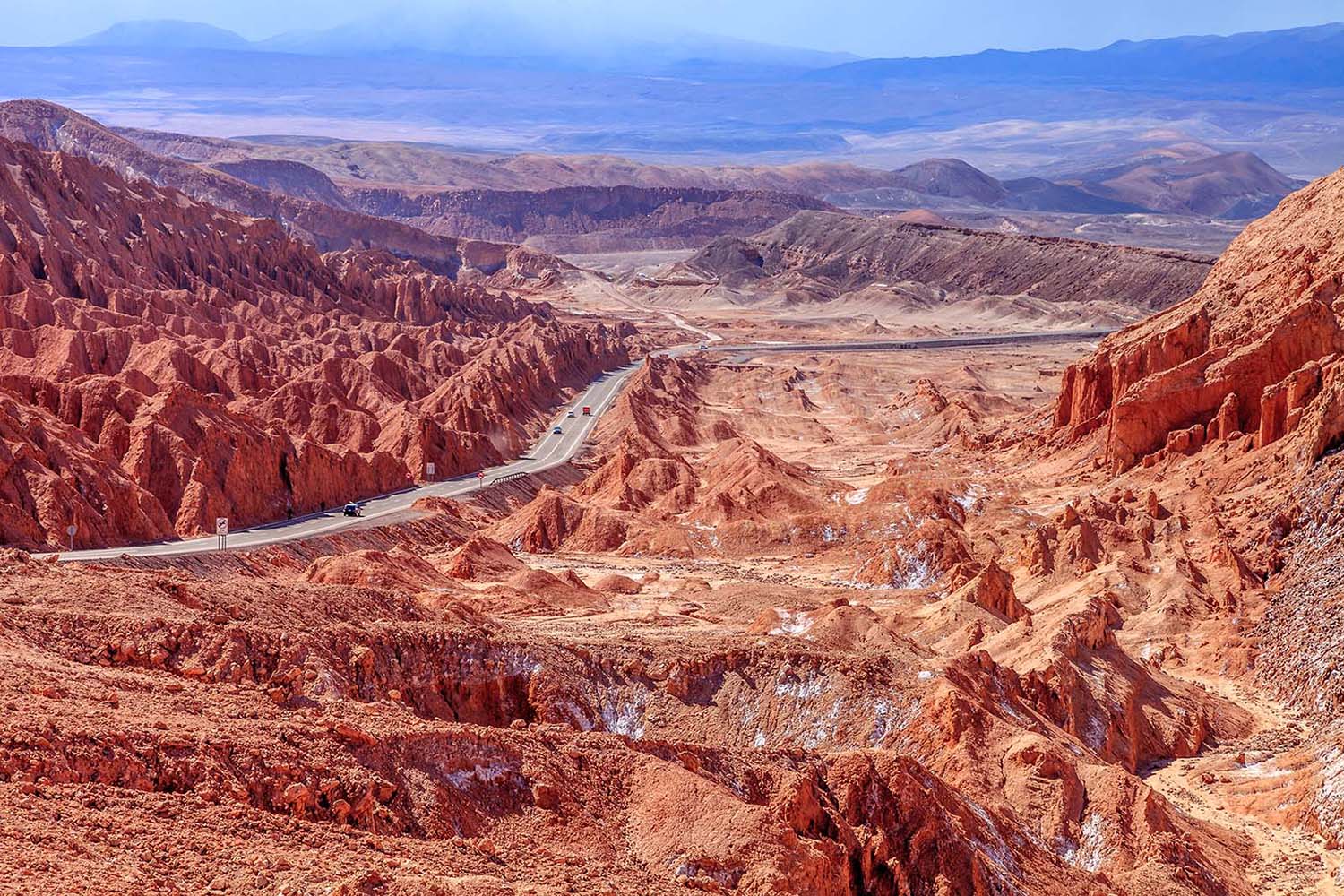
Valle de la Muerte, Atacama, Chile © Shutterstock
Here’s where things get really interesting in your how to plan a trip to Chile journey — researching and choosing which region/s to visit.
To help you hone in on exactly that, here’s an overview of place to have on your radar, while also considering the kind of Chile accommodation you're looking for.
The driest non-polar desert in the world, the Atacama Desert is a surreal wonderland of Mars-like landscapes, salt flats, colorful lagoons, geysers and flamingo-filled lakes.
Based around the town of San Pedro de Atacama, this region is also world-renowned for its spectacular stargazing opportunities, the Valle de la Luna, El Tatio geysers, and ancient archaeological sites.
Into adventure? Here you can enjoy the likes of sandboarding hiking, and photography, while culture vultures will enjoy immersing themselves in indigenous cultures and traditional Andean customs.
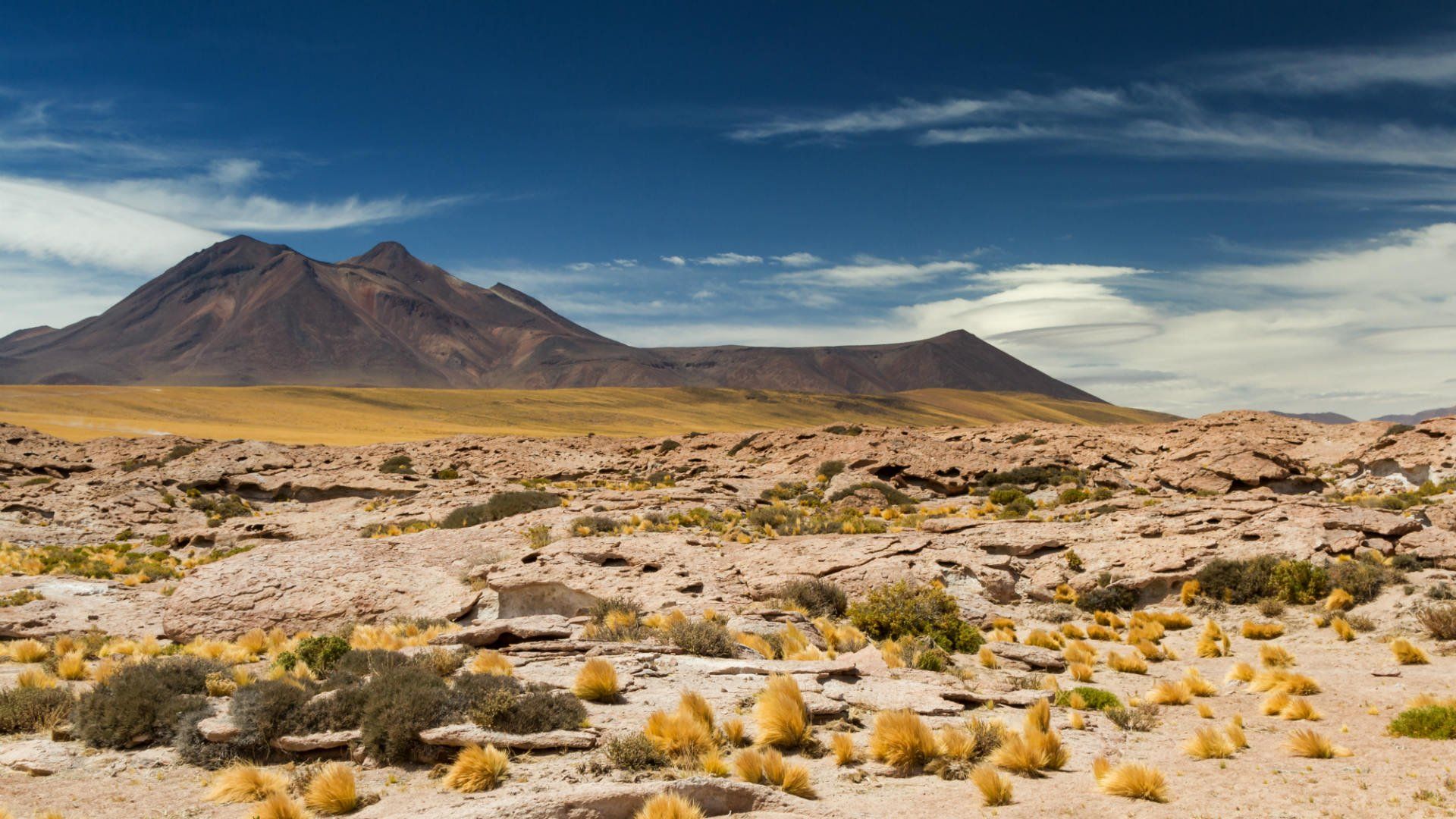
Atacama Desert, Chile © Shutterstock
Blending coastal charm and world-class wine, Central Chile is ideal for travelers who are keen on culture.
For example, Santiago, the capital, offers museums and markets, with nearby Valparaíso showcasing vibrant street art, historic funiculars, and a bohemian vibe.
Meanwhile, the Maipo, Casablanca, and Colchagua Valleys are top destinations for wine tasting, especially Carménère and Sauvignon Blanc.
In addition, Central Chile is also the gateway to the Andes, with winter skiing available near Santiago.

Valparaíso, Chile © Shutterstock
Chile's Lake District (Región de Los Lagos) is a scenic region of snow-capped volcanoes, deep-blue lakes and verdant forests.
Centered around towns like Puerto Varas, it offers plenty of outdoor adventures, including hiking, kayaking and rafting.
Reflecting Germanic influences in its architecture and cuisine as a result of 19th-century settlers, this region is also a family-friendly destination.
In addition, national parks like Vicente Pérez Rosales and Huerquehue are on hand to keep nature lovers very happy.

Puerto Varas, Lake District, Chile © Shutterstock
The Chiloé Archipelago is a culturally rich region known for its mythology, UNESCO-designated colorful wooden churches, and distinct cuisine like curanto.
Thanks to its rolling hills, misty coastlines and traditional stilt houses, it offers a stark — and captivating — contrast to mainland Chile, with a deep-rooted indigenous and Catholic heritage that permeates its festivals and folklore.
As for where, exactly, to visit, note that towns like Castro and Ancud are hubs for exploring the nearby Chiloé National Park and wildlife, including penguins and marine birds.

Beach on Chiloé, Chile © Shutterstock
Chilean Patagonia is an epic wilderness of glaciers, fjords, mountains and windswept plains.
Home to the legendary Torres del Paine National Park, where travelers can hike the famous W or O circuits among dramatic peaks, turquoise lakes, and roaming guanacos, it’s a bucket-list destination for adventurers.
On that subject, note that Puerto Natales and Punta Arenas are launch points for exploring the Magellanic region and southern ice fields.

Punta Arenas, Chile © Shutterstock
Located over 3500 km west of mainland Chile in the Pacific Ocean, Easter Island — Rapa Nui — is one of the most remote inhabited islands in the world.
Famous for its moai statues, which were carved by the Rapa Nui people between the 13th and 16th centuries, here you can look forward to exploring archaeological sites like Rano Raraku, Ahu Tongariki and Anakena Beach.
The island also offers opportunities for volanco hiking, horseback riding, snorkelling and cultural immersion with Polynesian traditions.
Access is via flights from Santiago, which take around 5.5 hours.

Easter Island © Shutterstock
Being a long, narrow country spanning over 4200 km from north to south, with widely varied topography, getting around Chile requires strategic planning.
That said, you have a choice of public transport, self-driving, and booking organized tours, depending on the region and type of experiences you want. Here’s an overview:
For more transport context, read up on getting to Chile, and getting around Chile.

Cerro Castillo landscape, Patagonia, Chile © Shutterstock
Staying connected in Chile is relatively easy, especially in urban and tourist-friendly areas.
Wi-fi is widely available in hotels, hostels, cafés, restaurants, and public space like airports and bus terminals.
You can purchase a prepaid SIM card at airports, convenience stores, or mobile shops with just your passport. Plans are affordable and usually include data, local calls, and texts.
Note that while coverage is excellent in cities, it’s often limited in remote regions like Patagonia or the Atacama.

Torres del Paine National Park, Chile © Shutterstock
Chile offers a wide range of travel experiences to suit different budgets — from affordable ways to go backpacking in South America, to high-end adventure travel.
Prices also vary depending on the region (e.g., Patagonia is pricier than Santiago), season and travel style.
On a budget? You could look to plan a trip with expenses of $40–$80 a day, staying in hostels, self-catering, and booking long-distance buses.
If you’re working to a mid-range budget, expect to pay $90-$180 a day for comfortable travel — staying in local boutique hotels or B&Bs, with occasional splurges on fancier dining and guided tours.
At the other end of the scale, you’re looking at $200-$500+ a day for luxury travel experiences i.e. staying in high-end hotels and lodges, fine dining with wine pairings, taking private transfers, and booking private excursions.

Atacama, Chile © Shutterstock
Chile’s vast length and diverse geography mean you'll likely encounter multiple climates on a vacation that covers different regions — from desert heat to Andean cold.
As a result, layering is key when it comes to packing clothes. Think moisture-wicking T-shirts and thermal tops for cold regions, a fleece or insulated jacket for warmth, and a waterproof windbreaker or rain jacket.
You’ll also want comfortable pants for hiking, and durable hiking shoes or boots, sandals or sneakers.
A sun hat and/or wool hat is a good idea for sun protection and high-altitude cold, and having gloves and a scarf is essential in Patagonia and high Andean regions.
Heading to Easter Island? Think light clothing, sun protection and reef shoes.
Beyond clothing considerations, hikers will also want a daypack, dry bag and water bottle.
And don’t forget taking some first aid basics, and altitude sickness tablets for the Andes.

Easer Island, Chile © Shutterstock
Here are some additional Chile travel tips to help you plan your trip.
Ready to start planning your own trip to Chile? Check out the best places to visit in Chile as you plan your itinerary.
Not keen on planning/? Simply contact our local Chile travel experts to have them devise your ideal Chile itinerary
From travel safety to visa requirements, discover the best tips for visiting Chile
Discover Chile's most captivating stories
written by
Joanne Owen
updated 11.06.2025
Joanne is a Pembrokeshire-born writer with a passion for the nature, cultures and histories of the Caribbean region, especially Dominica. Also passionate about inspiring a love of adventure in young people, she’s the author of several books for children and young adults, hosts international writing workshops, and has written articles on the Caribbean and inspirational community initiatives for Rough Guides. Follow her @JoanneOwen on Twitter and @joanneowenwrites on Instagram.
Arrange your trip, hassle-free, with local travel experts
Arrange your trip with local travel experts